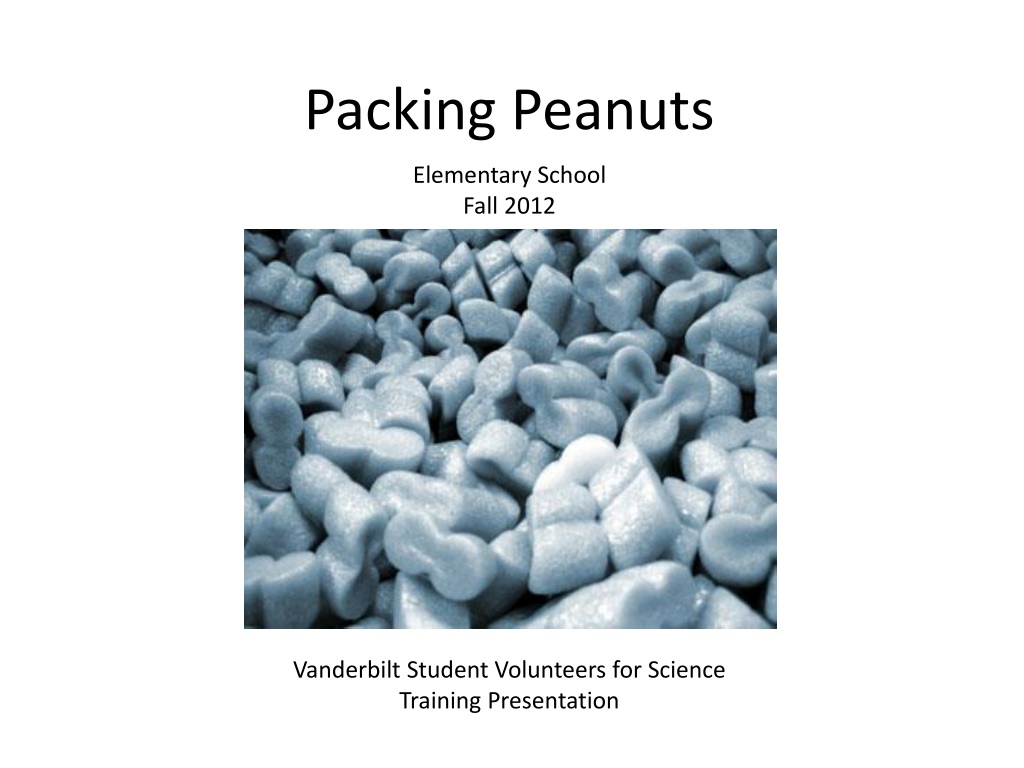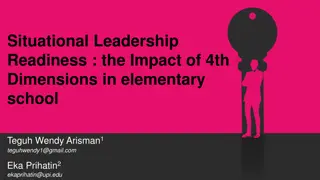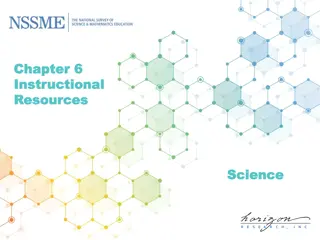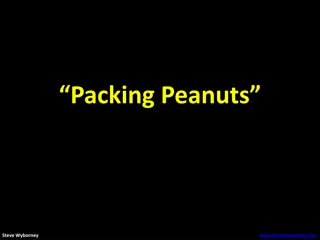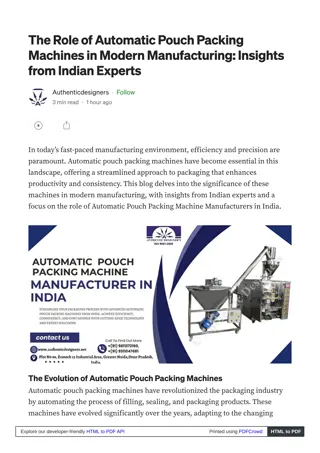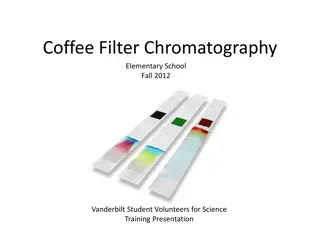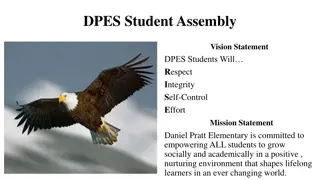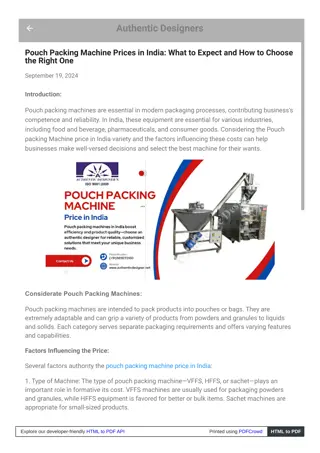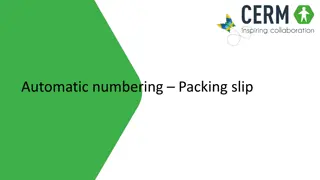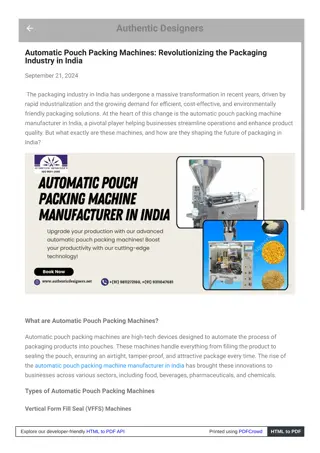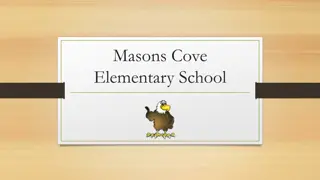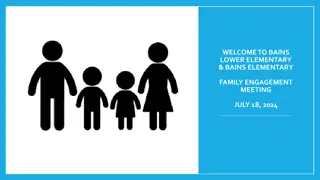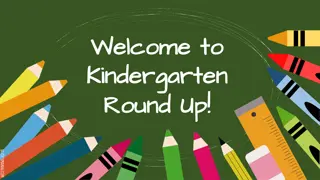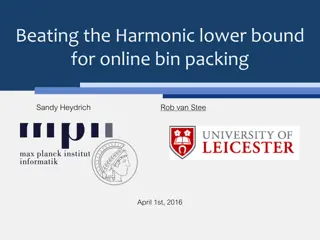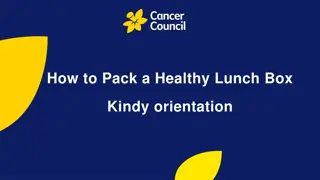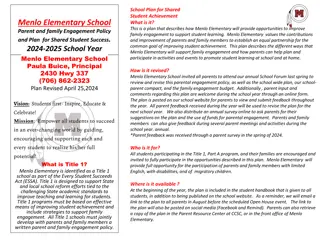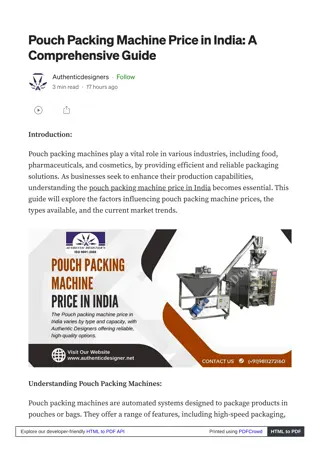Understanding Packing Peanuts: Elementary School Science Presentation
Explore the creation and properties of polystyrene and starch packing peanuts, learn about the environmental impact of packing materials, and engage in experiments to determine biodegradability. Students also discuss waste production and landfill material considerations in this hands-on science training presentation.
Uploaded on Sep 30, 2024 | 0 Views
Download Presentation

Please find below an Image/Link to download the presentation.
The content on the website is provided AS IS for your information and personal use only. It may not be sold, licensed, or shared on other websites without obtaining consent from the author. Download presentation by click this link. If you encounter any issues during the download, it is possible that the publisher has removed the file from their server.
E N D
Presentation Transcript
Packing Peanuts Elementary School Fall 2012 Vanderbilt Student Volunteers for Science Training Presentation
Information to Know Beforehand Both polystyrene and starch packing peanuts are mostly gas by volume. Polystyrene and starch packing peanuts are created by melting polystyrene/starch and blowing carbon dioxide gas through the liquid form. The resulting foam solidifies into a solid that is only 5% solid and 95% carbon dioxide.
I. Introduction Ask students how much trash they think is produced by one person each day. (Answer is actually about 4.5 pounds) Show Students the black garbage bag and explain how the average person throws away that much every two weeks. Cities are running out of space to dump the trash.
I. Introduction Ask students if they can tell what is used to protect items transported in boxes and packages. Tell students that Americans use about 200 million cubic feet per year of polystyrene loose fill (packaging material. Ask students what would be good properties for packing materials.
II. Ideal Packing Materials for Landfills Tell students that the city you live in is going to make a landfill just for packing materials 2 blocks from where you live. Ask students what would be some properties of packing material that you would allow to be put into your landfill. What would be disallowed. Write some suggestions on the board
II. Ideal Packing Materials for Landfills Tell students that they will test two different types of packing peanuts to determine which is more environmentally friendly. Define biodegradable for the students. Explain to the students that one of the packing peanuts is biodegradable and one isn t.
IIIa. Experiment(Observations) Give each pair of students an observation sheet and the #1 and #2 cups each containing 1 peanut of each kind. (Don t tell them the difference) Tell students to use their senses (except taste) and make observations about the peanuts. A VSVS will record the observations on the board.
IIIb. Experiment(Biodegradable) Tell students they are going to test whether their peanuts dissolve in water. Give each pair a plate and 2 plastic spoons and pour water into their cups so that they are half full. Ask students what do they observe about the packing peanuts
IIIb. Experiment(Biodegradable) Tell students to take the spoon and try to push down each packing peanut under the water while stirring the water and observe if anything else happens. Ask students which peanut would be better for the landfill. Tell students that the starch peanut is biodegradable, the polystyrene one is not. Tell them that the resulting solution is safe and will not harm the environment Ask students if they know of other things made of polystyrene
IV. Experiment 2 (Cornstarch) Show students the box of cornstarch and tell them that this is what the starch peanut is made from. Tell students that another good thing about starch peanuts is that it made from corn, which is a renewable material. Tell students that we can do a simple chemical test for starch. Make sure students have goggles on.
IV. Experiment 2 (Cornstarch) Give each pair a 1 oz cup containing a small plastic scoop of cornstarch on the plate. Team members should take one of the iodine bottles and add two drops of iodine solution to the 10 oz cup of cornstarch. Ask students to observe what happens
IV. Experiment 2 (packing peanut) Give each pair one #1 packing peanut and one #2 packing peanut Team members should take one of the iodine bottles and add two drops of iodine solution to the surface of each packing peanut Ask students to observe what happens
Clean-up and Summary Empty the cups and water bottles down the drain. Put used plastic cups, cornstarch containers, spoons, and used polystyrene peanuts in the trash bag. Return aluminum pans, iodine bottles, and water bottles to the box. Place trash bag in the box and bring back to VSVS lab as soon as possible. Review what students learned today. See if they remember packing peanut properties.
